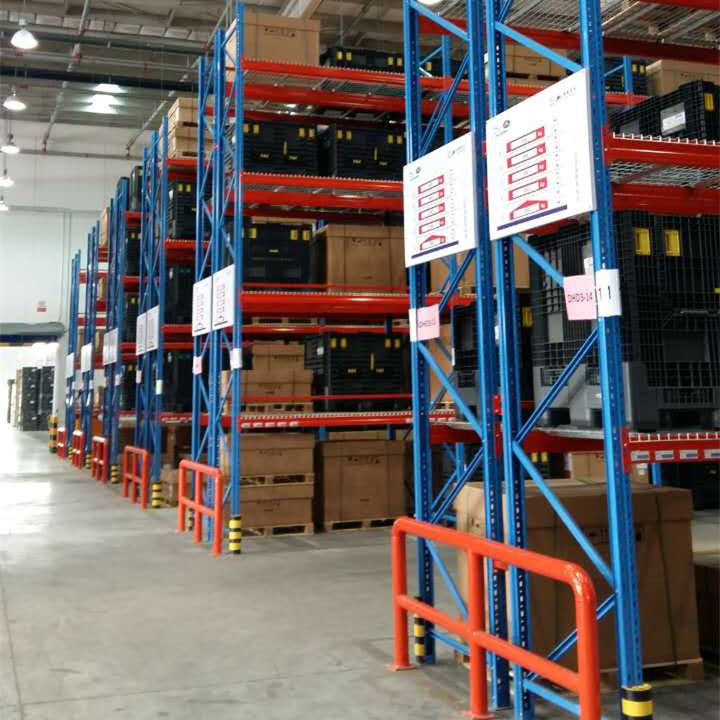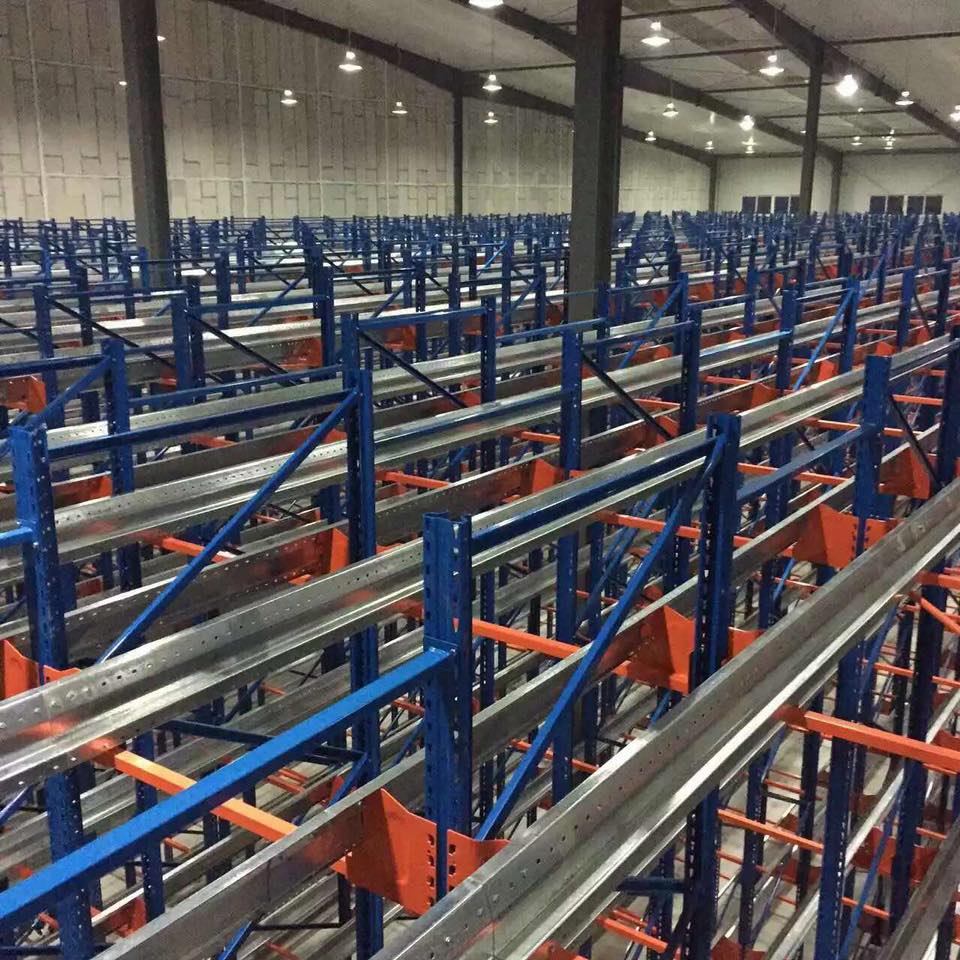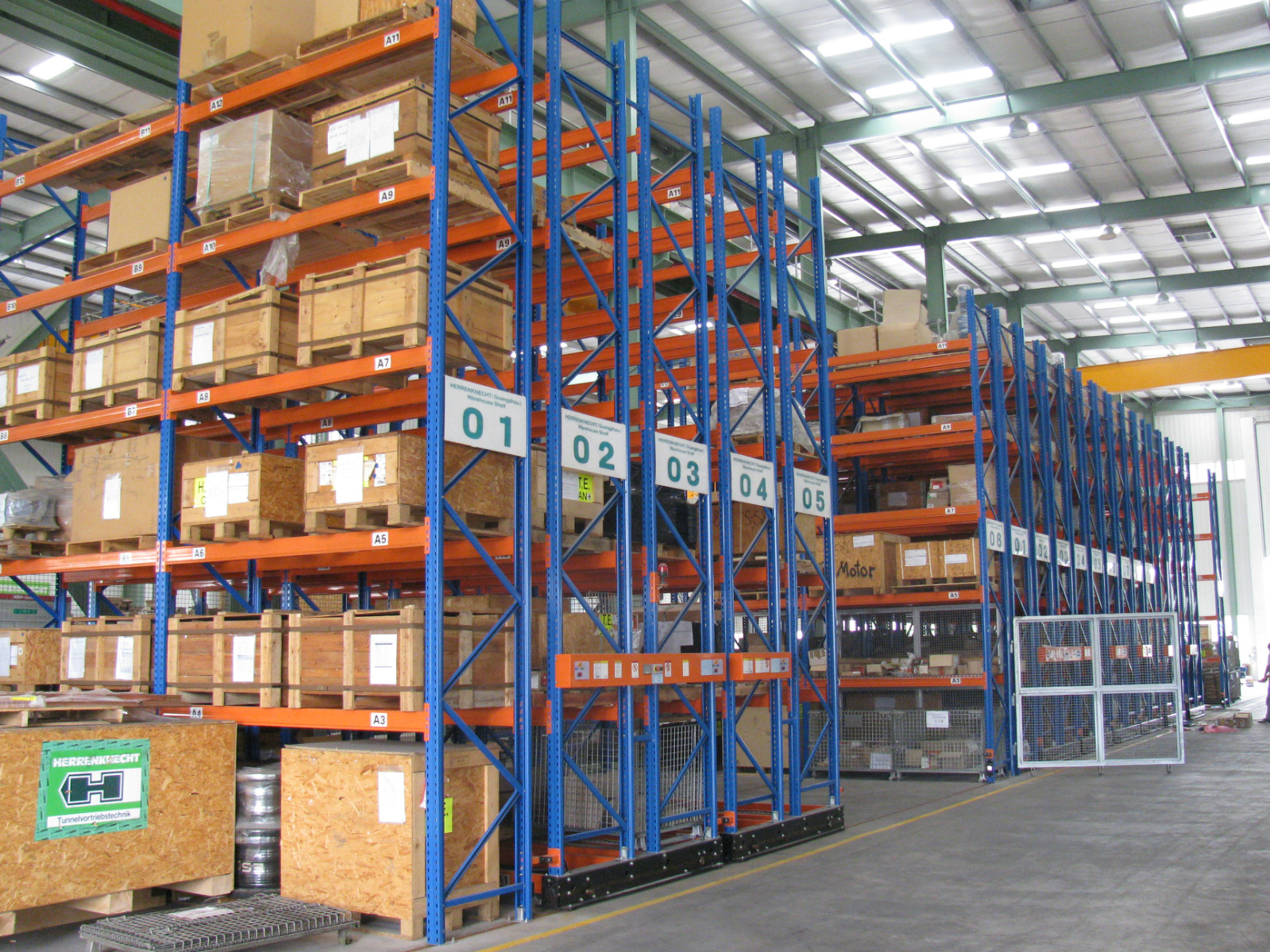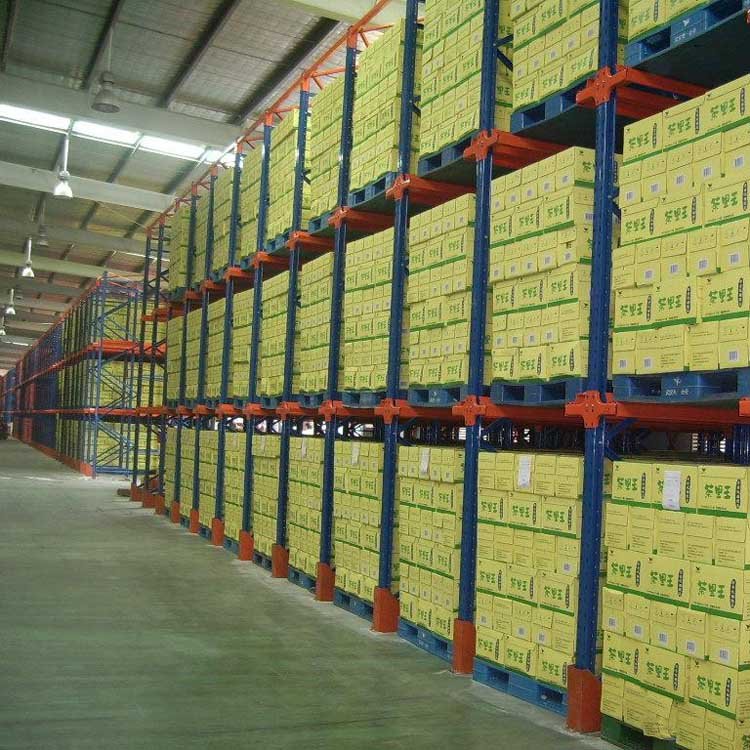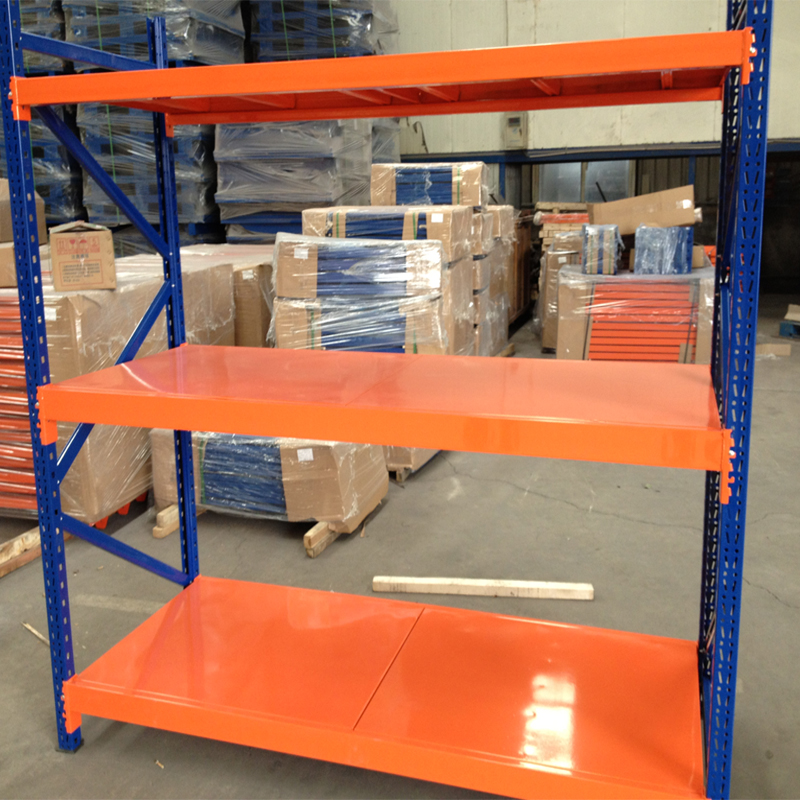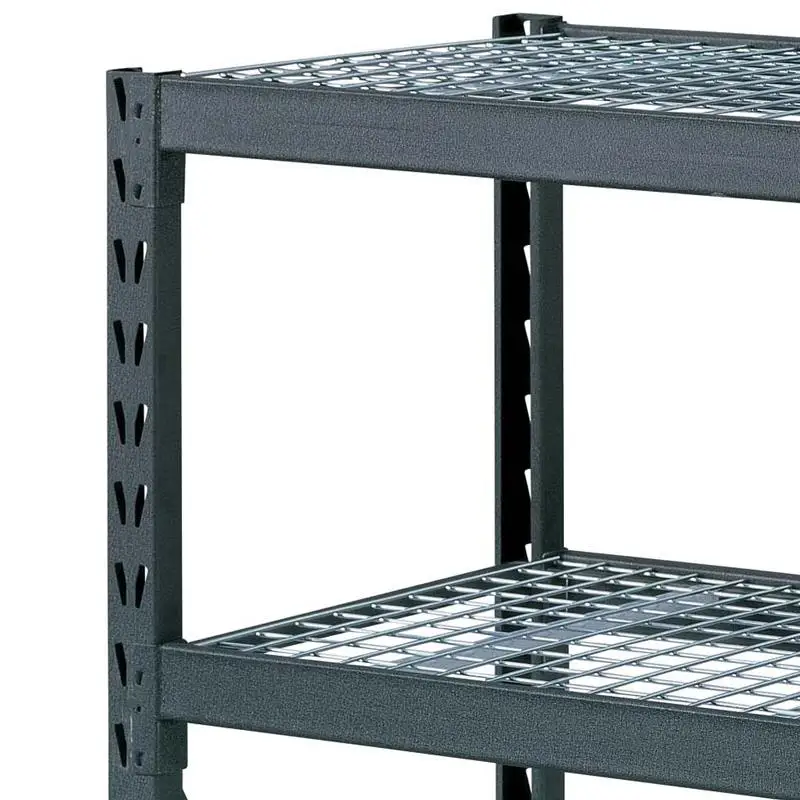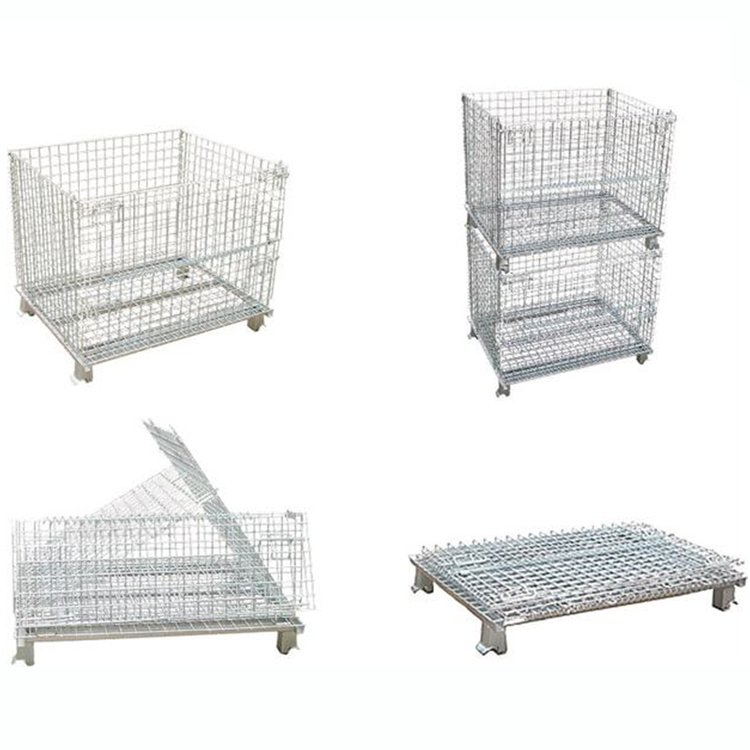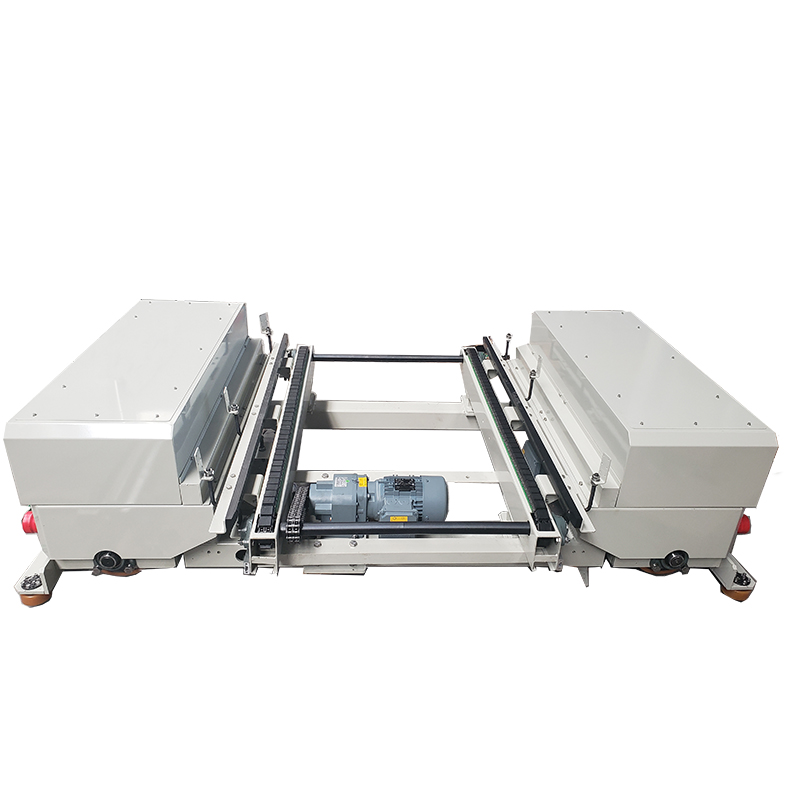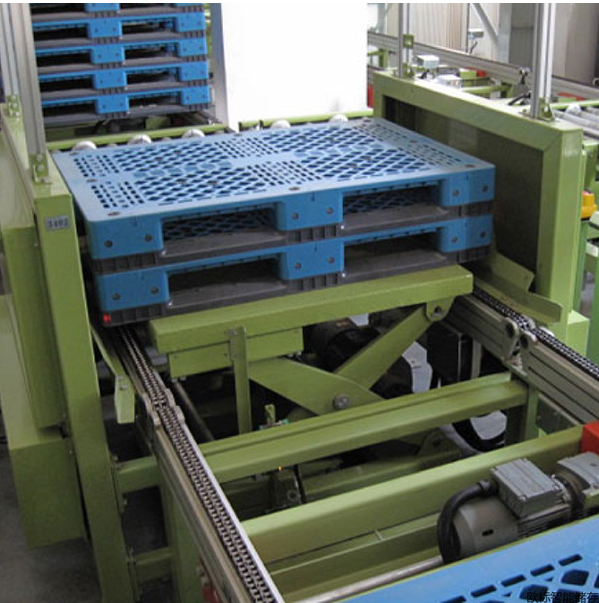Products
Ebil Tech
Warehouse Racking
Warehouse Racking is one of our products, we can provide one-stop storage system solutions and products, our products also include Medium Duty Shelf Unit, Warehouse Automation Equipment, ASRS Rack, Teardrop Pallet Racking System, Medium-Duty Shelving, Long Material Pallet, Flat Pallet Rack TRG, Pallet Racking, and so on. EBILTECH providing the automated and intelligent products of logistics system, such as pallet shuttle, stacker crane, cargo elevator, automatic transport system, other electrical automation and software of the logistics system. We have many main markets in the world, such as Indonesia, Cairo (Egypt), Egypt, Bursa (Turkey), Lille (France), Pridnestrovie, and so on. We are looking forward to cooperate with you. If you are interested in Warehouse Racking.
Warehouse racking, also known as storage racking or pallet racking, refers to the system of structures and shelves used in a warehouse or distribution center to store goods in an organized and efficient manner. It provides a framework for storing palletized or non-palletized goods, optimizing space utilization, and facilitating easy access to inventory.
Key features and components of warehouse racking include:
1. Uprights: Uprights are the vertical columns or frames that support the racking system. They are typically made of steel and are available in various heights, widths, and load capacities. Uprights provide the main structural support for the racking system.
2. Beams: Beams are horizontal components that connect the uprights and provide support for the stored goods. They come in different lengths and load capacities, and their height can often be adjusted to accommodate different pallet sizes or load requirements.
3. Pallet Supports or Wire Decking: Pallet supports or wire decking are surface materials that are placed on the beams to provide a stable platform for pallets to sit on. They prevent pallets from sagging between the beams and improve load distribution.
4. Load Beams: Load beams are horizontal load-bearing members that connect to the uprights and support the weight of the pallets or stored goods. They are typically inserted into slots on the uprights and can be adjusted or replaced as needed.
5. Cross Bracing: Cross bracing consists of diagonal bars or supports that connect the uprights to provide additional stability and rigidity to the racking system. They help distribute the load and prevent the uprights from swaying or tipping.
6. Rack Accessories: Various accessories can be added to warehouse racking systems to enhance functionality and safety. These may include pallet stops or guides to prevent pallets from being pushed too far back, row spacers to maintain proper aisle widths, safety bars to prevent items from falling, and column protectors to safeguard the uprights from forklift damage.
7. Load Capacity: Warehouse racking systems are designed to support specific load capacities, which depend on factors such as the type of racking system, beam and upright dimensions, and the strength of the materials used. It is important to adhere to load capacity limits to ensure safe storage and prevent structural failure.
Warehouse racking systems are typically designed to accommodate palletized goods, allowing for efficient use of space and easy access to inventory using forklifts or other material handling equipment. They are widely used in warehouses, distribution centers, manufacturing facilities, and other storage environments to organize and manage large quantities of goods effectively. Different types of racking systems, such as selective racking, drive-in racking, or flow racking, can be chosen based on specific storage needs, inventory turnover, and available space.
There are several types of warehouse racking systems available, each designed to meet specific storage needs and optimize space utilization. Here are some common types of warehouse racking:
1. Selective Pallet Racking: Selective racking is the most common and versatile type of racking system. It consists of upright frames and horizontal load beams that allow for direct access to each pallet. It is suitable for high selectivity and a wide range of product sizes and SKUs.
2. Drive-In and Drive-Through Racking: Drive-in and drive-through racking systems are designed for high-density storage and are commonly used when storing large quantities of identical products. With drive-in racking, forklifts drive into the rack structure to deposit or retrieve pallets, while drive-through racking allows forklifts to enter from both ends of the system.
3. Push-Back Racking: Push-back racking operates on a Last-In, First-Out (LIFO) principle and is used to store multiple pallets of the same SKU. Pallets are loaded onto nesting carts that are pushed back along inclined rails, and when a new pallet is loaded, it pushes the previous one further back.
4. Pallet Flow Racking: Pallet flow racking utilizes inclined roller tracks or wheels to create a dynamic flow system. Pallets are loaded at one end and flow down to the picking face, utilizing the force of gravity. This system ensures automatic stock rotation based on the First-In, First-Out (FIFO) principle.
5. Cantilever Racking: Cantilever racking is designed for the storage of long, bulky, or irregularly shaped items such as lumber, pipes, or furniture. It consists of vertical columns with horizontal arms extending from them, allowing for easy access and retrieval of items without front obstructions.
6. Mezzanine Racking: Mezzanine racking involves the installation of a raised platform or additional floor within the warehouse space. It creates extra storage space above or below the mezzanine structure, utilizing vertical space while maintaining accessibility to the lower level.
7. Mobile Racking: Mobile racking, also known as movable racking or compact racking, is a system where the racks are mounted on motorized carriages that move along tracks. This system allows for dense storage and maximum space utilization by eliminating wasted aisle space.
8. automated storage and retrieval systems (AS/RS): AS/RS refers to a range of automated systems that handle the storage and retrieval of goods. These systems often include automated cranes or shuttles that move vertically and horizontally within the racking structure, delivering and retrieving items as needed.
These are just a few examples of warehouse racking systems. The choice of racking system depends on factors such as the type of goods being stored, inventory turnover, available space, accessibility requirements, and budget constraints. It is important to consider the specific needs of the warehouse and consult with experts to determine the most suitable racking solution.
The pricing of warehouse racking can vary significantly based on several factors, including the type of racking system, size, configuration, load capacity, material, and the supplier or manufacturer. Warehouse racking systems come in various types, such as selective pallet racking, drive-in racking, push-back racking, and more.
1. Selective Pallet Racking:
- Price Range: $75 to $200 per pallet position (rack bay) for new systems.
- Factors Affecting Price: Height, width, and depth of the uprights, number of levels, load capacity, additional accessories (e.g., wire mesh decking, pallet supports), and any customization requirements.
2. Drive-in Racking:
- Price Range: $150 to $400 per pallet position (rack bay) for new systems.
- Factors Affecting Price: Height, width, and depth of the uprights, number of levels, load capacity, number of pallets deep, and any customization requirements.
3. Push-back Racking:
- Price Range: $200 to $500 per pallet position (rack bay) for new systems.
- Factors Affecting Price: Height, width, and depth of the uprights, number of levels, load capacity, number of pallets deep, and any customization requirements.
4. Cantilever Racking:
- Price Range: $50 to $150 per arm (depending on length) for new systems.
- Factors Affecting Price: Height, number of arms per upright, arm length, load capacity, and any customization requirements.
It's important to consider that these prices are estimates and can vary significantly depending on factors specific to your needs, such as the size of the project, the supplier, and any additional requirements or customization. To get accurate and up-to-date pricing, it's recommended to contact suppliers or manufacturers directly. They can provide detailed quotations based on your specific requirements and help you determine the most suitable racking system for your warehouse.

